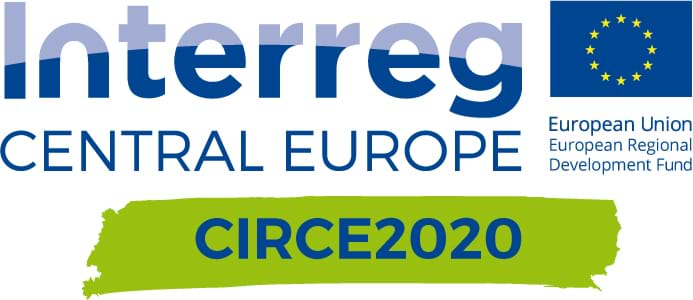PROJECT PARTNERS
From:
Austria, Croatia, Hungary, Italy, Poland

“Closing the loop” and returning resources back into the material cycle - creating a win win approach that benefits both, the economy and the environment. The circular economy goes beyond the traditional considerations of material efficiency, recycling or the use of side streams. It revolutionises companies’ services and funding solutions, as well as their business models, while strengthening the ecosystems between industries and companies and a whole society.
The project CIRCE2020 aims to minimise waste and to keep products and resources in the economy as long as possible, facilitating intergrated redesign of industrial interactions based on the principles of a circular economy. The final goal is to introduce innovative cross-value chain waste and resource governance models, analytic tools, clean technologies and organization standards to reduce and rationalize dependencies from primary natural resources within industrial processing.
Transition towards circular economy is a core priority of the EU 2020 Strategy, particularly relevant for Central European industrial areas due to the outstanding use of primary natural resources in various production stages: processing, packaging and transportation.
Recycling rates, however, are still far from directive targets and one main reason for this is that the reuse of by-products is often performed only by companies’ indipendent initiatives. Central European countries are characterised by numerous business organisational models but the same cross-value relationships are not fully exploited for waste valorization and for reducting the use of primary natural resources.
The CIRCE2020 project aims to facilitate a larger uptake of integrated environmental management approach in five specific Central European industrial areas by changing patterns from single and sporadic company recycling interventions to an integrated redesign of industrial interactions based on the concept of circular economy.
The goal is to introduce innovative cross-value chain waste governance models and transnational analytic tools to improve capacities of concerned waste public-private sector to reduce dependencies from primary natural resources within industrial processing. The project should also provide robust evidences about environmental and economic benefits from shifting to enhanced industrial symbiosis.